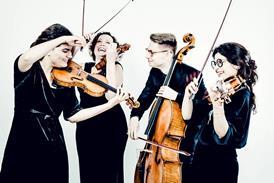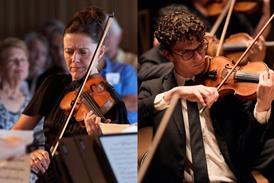- News
- For Subscribers
- Student Hub
- Playing Hub
- Directory
- Lutherie
- Magazine
- Magazine archive
- Whether you're a player, maker, teacher or enthusiast, you'll find ideas and inspiration from leading artists, teachers and luthiers in our archive which features every issue published since January 2010 - available exclusively to subscribers. View the archive.
- Jobs
- Shop
- Podcast
- Contact us
- Subscribe
- School Subscription
- Competitions
- Reviews
- Debate
- Artists
- Accessories
Analysis May 2022: Bright young things

A new survey by the American String Teachers Association gives an insight into the experiences of young music students. How can educators act on its findings? By Harry White
Marking its 75th anniversary this year, the American String Teachers Association (ASTA) is reflecting on both the past and the future. For its latest survey, Looking Forward, it has questioned just under 300 students aged 16 to 22 about their experience of high-school music, to inform the future practice of string teachers. At its national conference in March a panel of experts, chaired by musician and educator Taylor Morris, digested and debated the survey’s results with members. ‘The idea for the survey particularly grew out of what we feel to be incredible differences between our own lives as young students, which were pre- or early-internet for the majority of teachers, and the lives of young students today, with incredible access to information,’ says Morris. ‘In an ever-changing world we feel it’s important to consider and reflect on the voices of students when we think about guiding and developing the profession.’
The survey results gave an insight into a wide variety of topics. The subject of chamber music was a consistent presence, both as something that former students wished they had done more of and as a genre of music that future students would benefit from taking part in. ‘We know that people want to feel autonomy, a sense of belonging and competence in their endeavours, all of which are often easily found in chamber music,’ continues Morris. ‘While all of these things can certainly be felt in an orchestral setting, it can also be easy to feel like you’re just one person in a large group, especially if you don’t feel connected to the experience for whatever reason.’ The survey also cited ‘interaction with peers’ as playing an important role in students’ enjoyment of musical studies. Fellow panellist and professor at Texas State University Lynn Ledbetter agrees that there is a synergy between this and the importance of chamber music for students. ‘During the pandemic, musicians have sought positive interactions with their colleagues, their families, their constituents and their friends,’ she says. ‘By definition, chamber music is of course not only one person on a part, but “music by friends, for friends”. That, I think, perhaps says it all. Musicians of all kinds have reached out for musical connections.’..
Already subscribed? Please sign in
Subscribe to continue reading…
We’re delighted that you are enjoying our website. For a limited period, you can try an online subscription to The Strad completely free of charge.
* Issues and supplements are available as both print and digital editions. Online subscribers will only receive access to the digital versions.




























